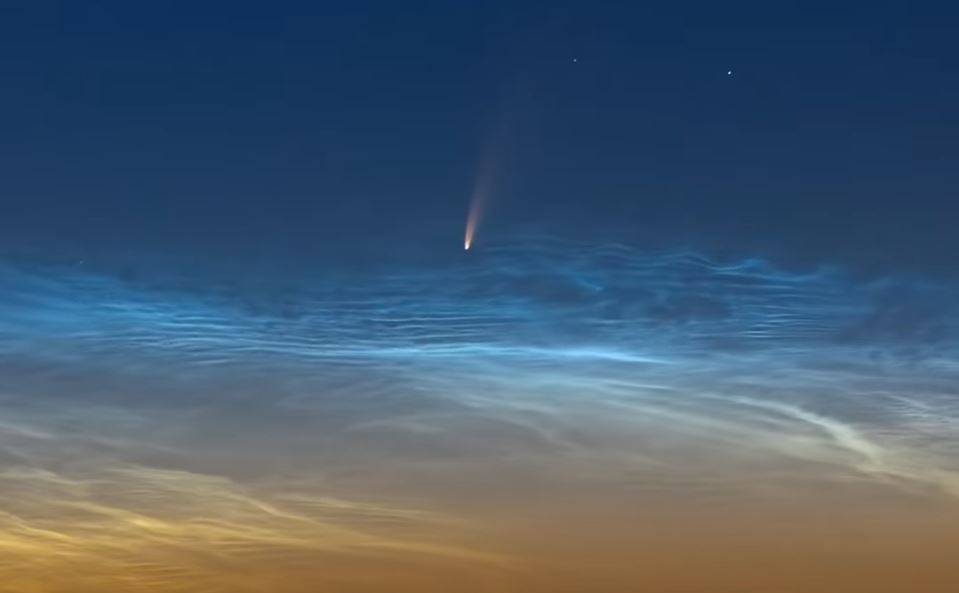
Craveology Cafe and the North Star Science Store are temporarily closed for renovation.

By Dr. Lisa Will, Resident Astronomer at the Fleet Science Center
There is a naked eye comet in our evening sky right now, Comet C/2020 F3 (NEOWISE). Comets are small, mostly icy objects that orbit the Sun in highly eccentric orbits. When they near the Sun, they sublimate, meaning some of their ice is heated into vapor, causing the tails that distinguish comets in our minds.
Comets are named after the person(s) or projects that discover them. This comet was discovered by the NEOWISE space telescope, which is a solar system-focused extended mission of the infrared WISE observatory. Since the discovery of this comet in March 2020, astronomers have determined that Comet C/2020 F3 is a long-period comet. Its orbital period was estimated to be about 4500 years, but its interaction with the Sun’s gravity has changed its orbital period to about 6800 years. So, this is your once-in-a-lifetime chance to look for this comet in the sky.
The NEOWISE project is the asteroid-hunting portion of the Wide-field Infrared Survey Explorer (WISE) mission. Funded by NASA's Planetary Science Division, NEOWISE harvests measurements of asteroids and comets from the WISE images and provides a rich archive for searching WISE data for solar system objects.
When you first heard of this comet, you may have learned it was visible before dawn. But now the best time to observe it has shifted into the evening. How do you look for it? You’ll need a location with a clear view towards the northwestern horizon. The comet will be below the Big Dipper. Here is a finder chart through the end of July.
Comet NEOWISE finder chart 18-31 July, 2020, by Comet Watch.
You don’t need special equipment right now, but binoculars will help to see it better; just make sure to not point them towards the comet while the Sun is still up. We don’t want you to accidentally look towards the Sun!
The biggest obstacle in observing this comet from San Diego will be the marine layer along the coast, so try to find some clear dark skies. And don’t wait too long! This comet has survived its perihelion passage, its closest approach to the Sun. That means it is getting farther from the Sun, and so it should be fading in brightness quickly. This comet will probably be visible to the naked eye for the next week, but cometary brightness can be hard to predict.
Check out #cometNEOWISE on Twitter for amazing photos from all over the world, and good luck looking for Comet NEOWISE this week!
Comet NEOWISE over Stonehenge. Image Credit & Copyright: Declan Deval
Wishing you clear skies!
Related link:
NEOWISE mission - https://neowise.ipac.caltech.edu